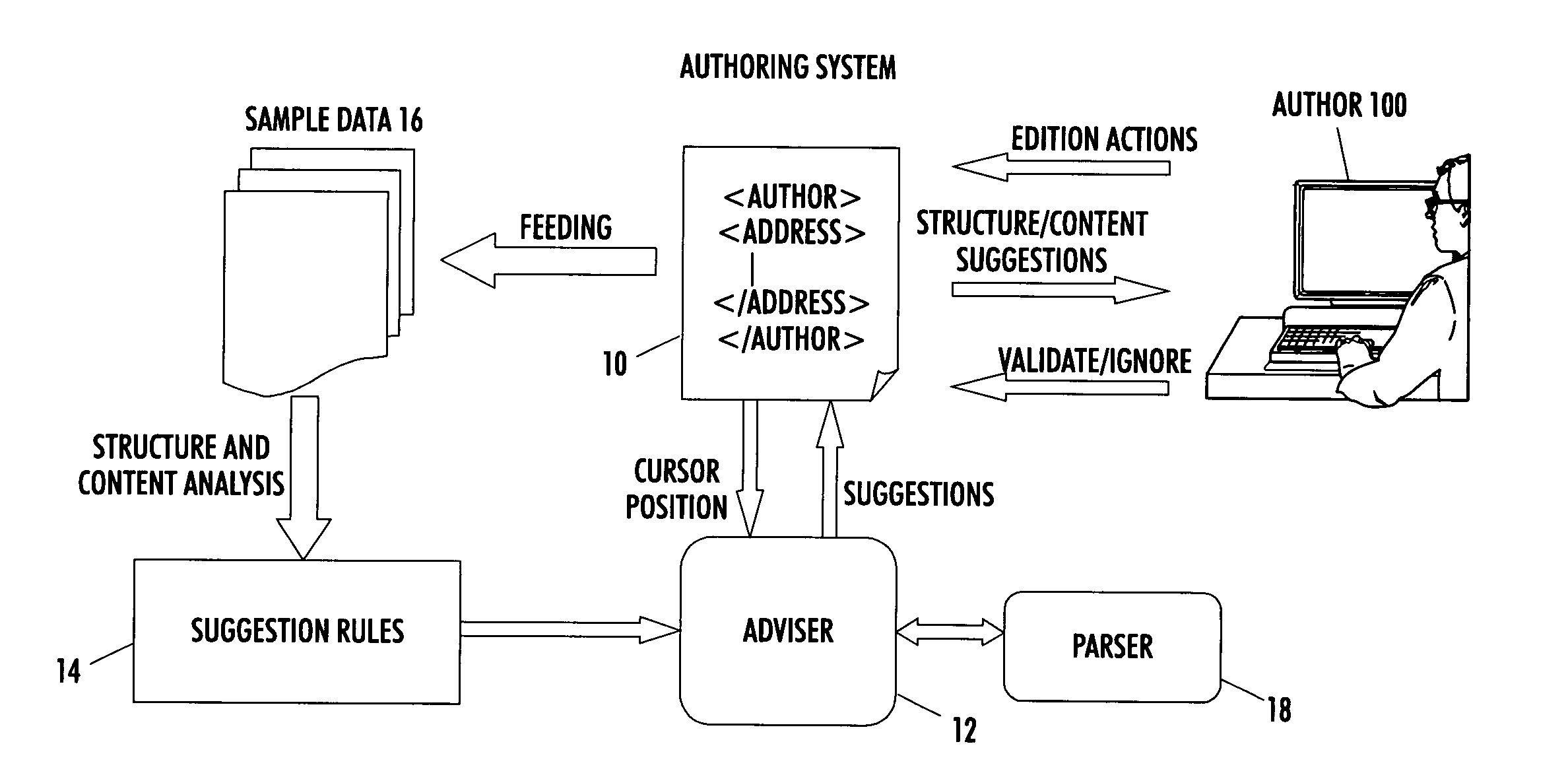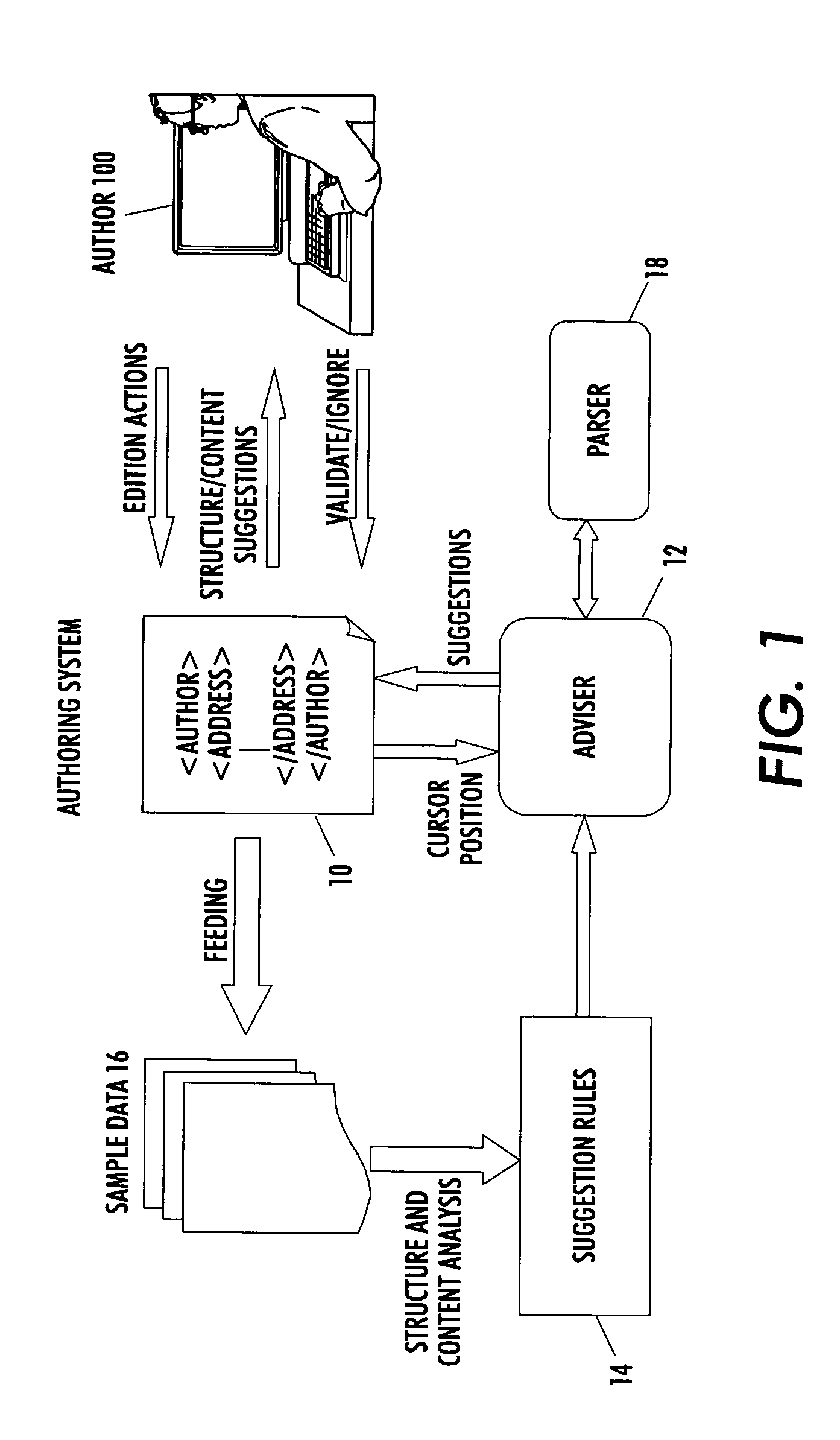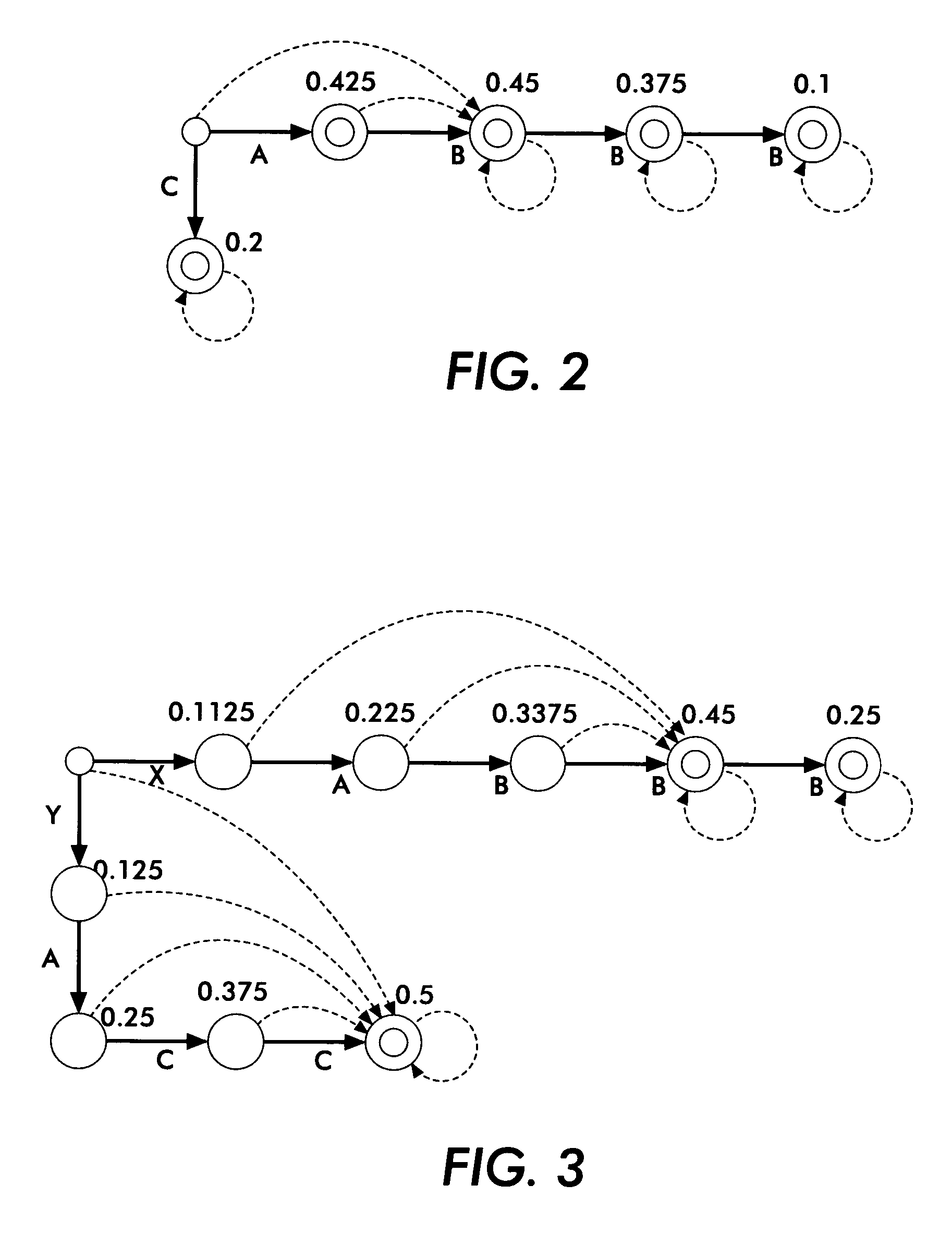System and method for structured document authoring
a structured document and document authoring technology, applied in speech analysis, speech recognition, data processing applications, etc., can solve the problems of difficult and time-consuming converting documents from other formats into xml, the number of documents available/generated in xml format remains relatively low compared to documents in other formats, and achieves the effect of maximizing the similarity function
- Summary
- Abstract
- Description
- Claims
- Application Information
AI Technical Summary
Benefits of technology
Problems solved by technology
Method used
Image
Examples
example 1
[0027]Assume that a collection of XML documents with an associated DTD was provided for off-line learning and the learning component has analyzed the collection and inferred patterns for authoring new documents. Now assume that the user edits a new document with the same DTD and at some point opens / closes tag . Below we consider four different examples of element A's structure imposed by the DTD and show how the adviser can help the user by suggesting the most probable tag or pattern. Table 1 below gives detail on tag patterns and their frequencies in sample data.
[0028]Case 1. DTD contains the element definition for A, that is, element A can contains only sub-elements B. There is no ambiguity and system proposes tag B as a unique choice or automatically expands it. On the other hand, the system can propose pattern BB as the most probable one. (Note that X=A (BB) is an abbreviation for the XML fragment . . . . . . .)
[0029]Case 2. DTD contains definition , thus allowing either B or C...
example 2
[0046]Assume the element X is defined in DTD as and the following table shows occurrences of all contents of element X in the sample data (note they all fit the DTD definition).
[0047]
Candidate cFrequencyProbabilityA20.2C20.2ABB30.3AB20.2ABBB10.1
[0048]The set of pattern candidates for opening tag X coincides with the pattern set T(X), C=T(X)={C,A,AB,ABB,ABBB}. For candidate A, we have sim(A,C)=0, sim(A,A)=1, sim(A,AB)=0.5, sim(A,ABB)=0.33 and sim(A,ABBB)=0.25. Then we obtain the aggregate similarity function value for candidate A, SIM(A,T)=0.425. Similarly, for other candidates in C we have SIM(C,T)=0.2, SIM(AB,T)=0.45, SIM(ABB,T)=0.375, SIM(ABBB,T)=0.1. Therefore, pattern AB is the optimal (context-free) suggestion for opening tag X.
[0049]When considering one-tag suggestions, we constrain the candidate set C to only one-tag pattern, C1={c ∈ C ||c|=1}and determine the optimal candidate in the same manner. In the example above, C, contains two one-tag candidates, C1={A, C}, and A is ...
PUM
 Login to View More
Login to View More Abstract
Description
Claims
Application Information
 Login to View More
Login to View More - R&D
- Intellectual Property
- Life Sciences
- Materials
- Tech Scout
- Unparalleled Data Quality
- Higher Quality Content
- 60% Fewer Hallucinations
Browse by: Latest US Patents, China's latest patents, Technical Efficacy Thesaurus, Application Domain, Technology Topic, Popular Technical Reports.
© 2025 PatSnap. All rights reserved.Legal|Privacy policy|Modern Slavery Act Transparency Statement|Sitemap|About US| Contact US: help@patsnap.com



